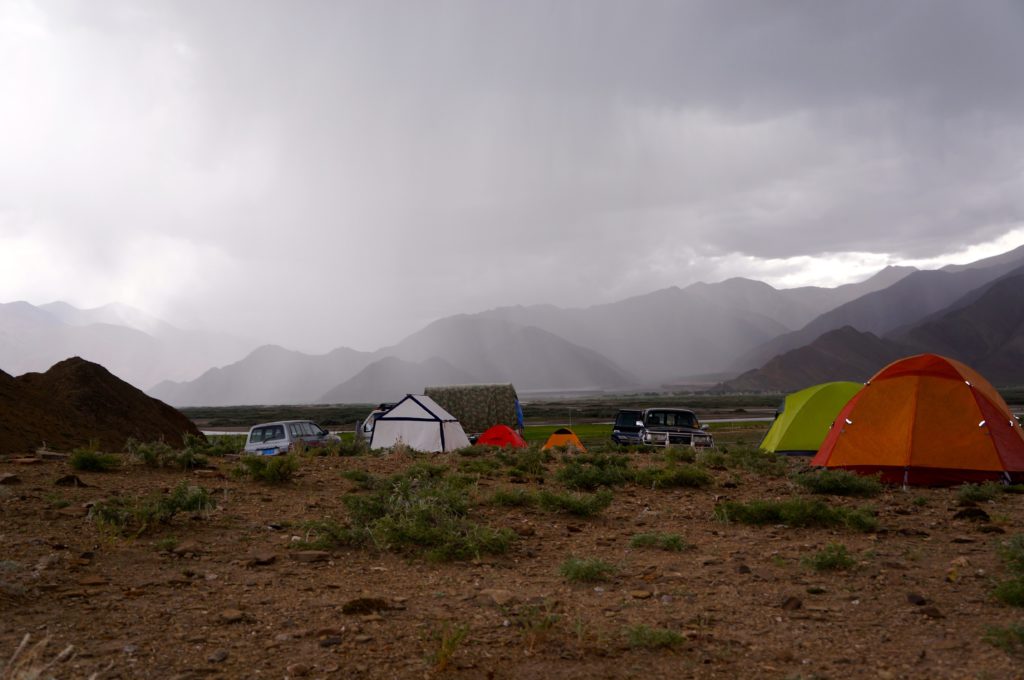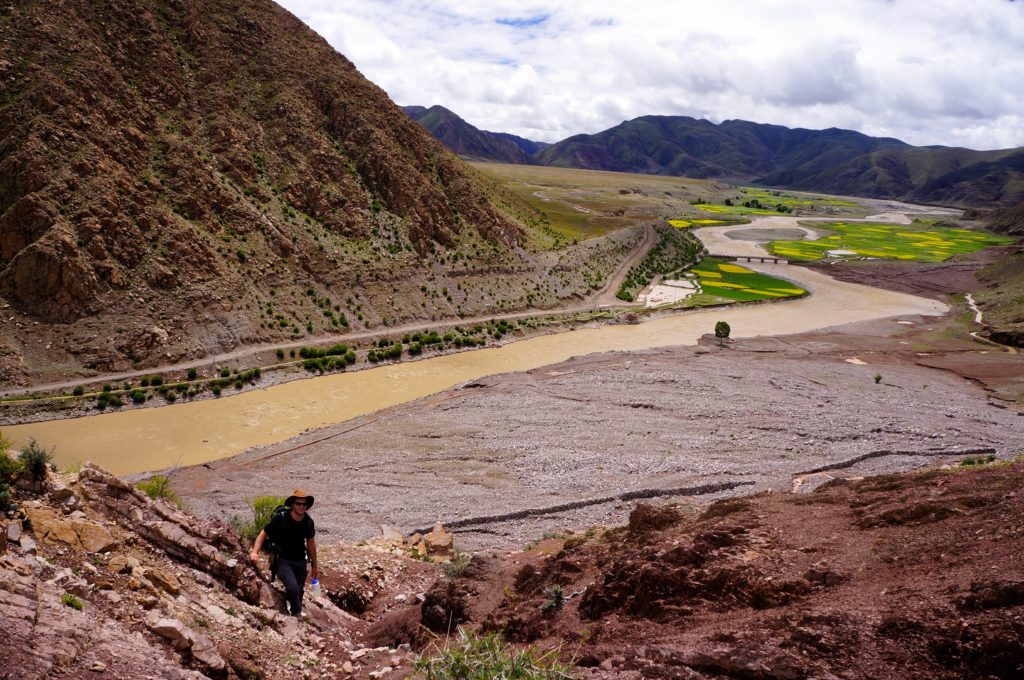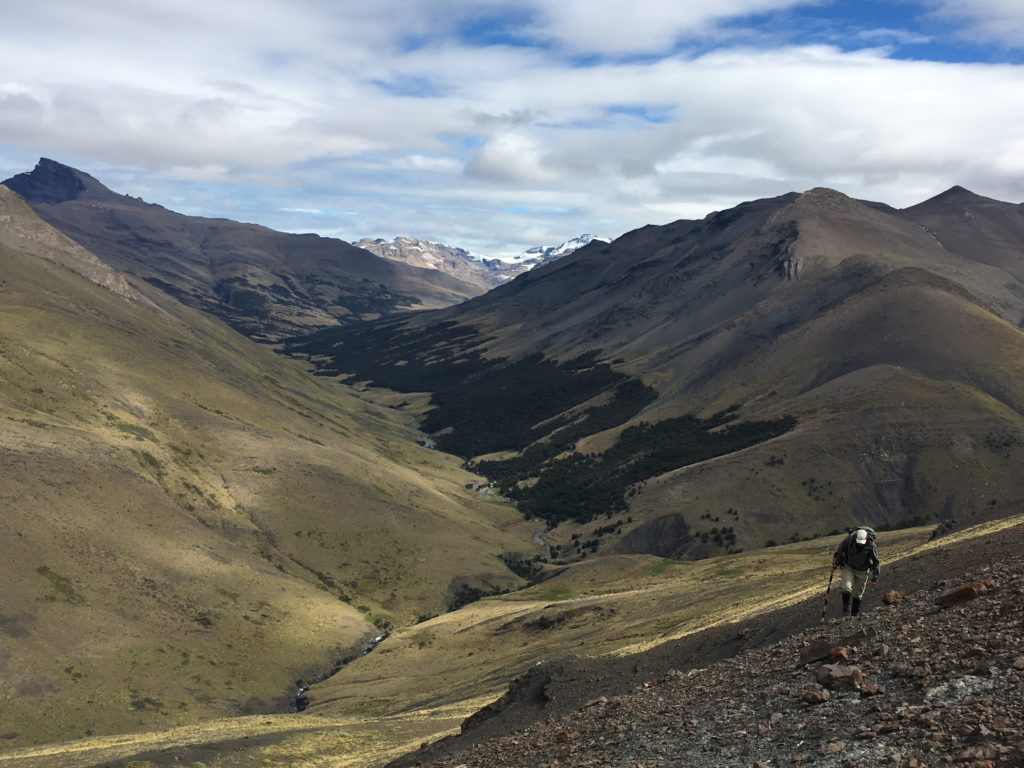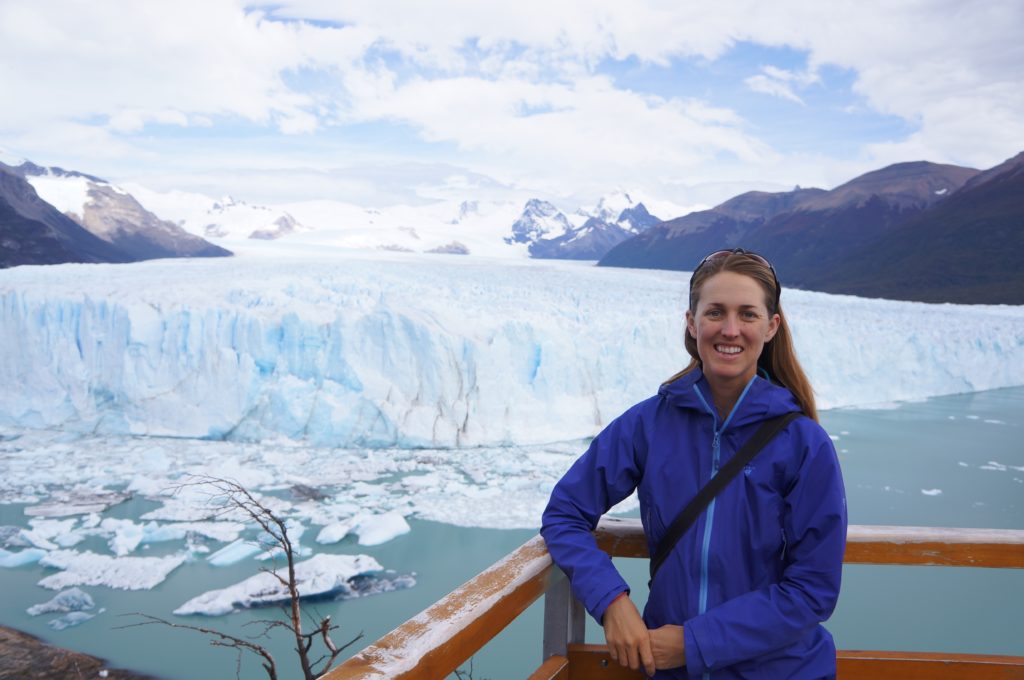Devon Orme is a Postdoctoral Fellow at Stanford University. Her research focuses on sedimentary basins and the tectono-thermal history of orogenic systems. You can find out more about her at https://devonorme.com.
As with many geologists, fieldwork is where my passion for studying Earth developed. In an undergraduate field methods course in the mountains of Big Sur, California, I remember being in awe of the juxtaposition of different rock types and shear scale of the mountains as they rose out of the Pacific Ocean. Through that course, summer camp and many field seasons since, basic field methods have produced a foundation upon which I continue to develop and seek new ways to understand Earth processes. Recently, I have come to appreciate the challenges of different landscapes, specifically how my field methods adapt to each region. I find that the fundamentals don’t change, but the approaches to a new set of questions are constantly evolving. This is an obvious theme for many geologists, but here I will share some experiences from two different field areas, where my expectations for what fieldwork would entail were met with surprises, challenges, and ultimately the learning of critical lessons of adaptability.
During the course of my Ph.D., I had the incredible opportunity to work along the India-Asia collision zone. This intercontinental suture extends for > 2000 km across southern Tibet at a mean elevation of ~ 5000 m. My dissertation focused on the Cretaceous-Eocene Xigaze forearc basin, a 5-8 km thick sequence of marine and nonmarine strata preserved along ~ 550 km of the suture zone. Specifically, my research addressed the pre-collisional paleogeography of the forearc, the timing of initial collision between Eurasia and India, and how the suture zone evolved after the onset of collision. The outcrop exposures in this region are excellent owing to deep river incision from the Yarlung-Tsangpo and its tributaries, rugged topography and scarce vegetation. Although the Xigaze forearc is highly deformed in many places (e.g., Chevron folds are abundant) there are incredible exposures where I could measure > 4 km of continuous section.
Working in Tibet comes with its own set of challenges. Physically, it is tough. The elevation, intense exposure to solar radiation, and steepness of the landscape make for some exciting traverses. I didn’t fully appreciate how slow one could hike until mapping at elevations of~4000-5800 m (~13,000-19,000 ft). Perhaps the most surprising part of working in Tibet came in the summer 2014. Our permits allowed us to work in the region in July-August, later in the summer than usual. This meant that we would likely experience the start of the monsoon season. Many of you have likely heard the expression: “Tibet is high and dry”. This is very true for many parts of the plateau, but not the India-Asia suture zone in late summer. It is high, but wet. Very wet. As my primary field method is measuring stratigraphic section and taking copious notes describing the sedimentology on paper, rain is a challenge. Each day in the field that summer, my field assistant, Simon Stickroth, and I would race to get to the outcrop and finish our work before the inevitable torrential downpour. Waterproof pens and paper were essential, but the outcrop exposures left no excuse for good detailed fieldwork.
In previous field seasons, the lack of vegetation and dryness of my field areas was quite apparent. However, in the summer of 2014, the landscape was lush with green cropland, rivers raged, and little critters, many of which I had never seen in prior years, appeared. Specifically, during nighttime thunderstorms, where the lightning felt like it could blind me with remarkable (piercing) brightness, scorpions would seek shelter under our tents and surprise us each morning with their claw chatter. Let’s just say, I never got used to that.
This past winter, I had the opportunity to do fieldwork in Patagonia, Argentina studying the deep-water stratigraphy of the Magallanes-Austral foreland basin system. Similar to Tibet, many days were filled with >15 km hikes, with significant vertical elevation gain. In contrast to Tibet, the style of field methods we used varied with each day. With the Quaternary glacial overprint of the landscape, many of the rocks in which we were interested were only exposed as mesas. It was much more “Appalachian style” geology. Map and measure in detail in one location and then hike a long distance to find another outcrop.
My field partner, Zach Sickmann, had warned me that good gators are essential for plowing through thick Calafate bushes, the wind would be brutal, and, because we were working later in the summer season than usual, “winter was coming”. He wasn’t kidding about the wind or the Calafate bushes. We had a few days where the wind was so strong and loud, it was impossible to hear each other as we measured sections. On occasion, we used hand signals to communicate the thickness measured as one of us hid within our jacket hood describing the sedimentology. Word of advice for future geologists working in the region: bring a lot of Buffs.
As for Winter, it came—but it did not bring rain. I had expected similar days to my fieldwork in Tibet. I would watch the clouds building over the Andes Mountains to the west and as the wind picked up, I thought: “Here we go”! It never rained on us once in the field. This experience in both Tibet and Patagonia certainly gives thought to how expected “average” weather phenomena can also reveal that variability is a critical element for which we need to be prepared.
Outcrop styles and field methods will vary across study regions, but one thing never waivers for me: The feeling of excitement as I become immersed in others’ cultures and the gratitude to be able to work on some of Earth’s most spectacular mountain ranges. On the rare occasion I ran into people in the field in both environments, the warmness of the Tibetan people and Argentinian gauchos was apparent. Their curiosity of what we were exploring never gets old. The rugged terrain and expansive views keep me coming back for more and I look forward to new adventures during my next field season.
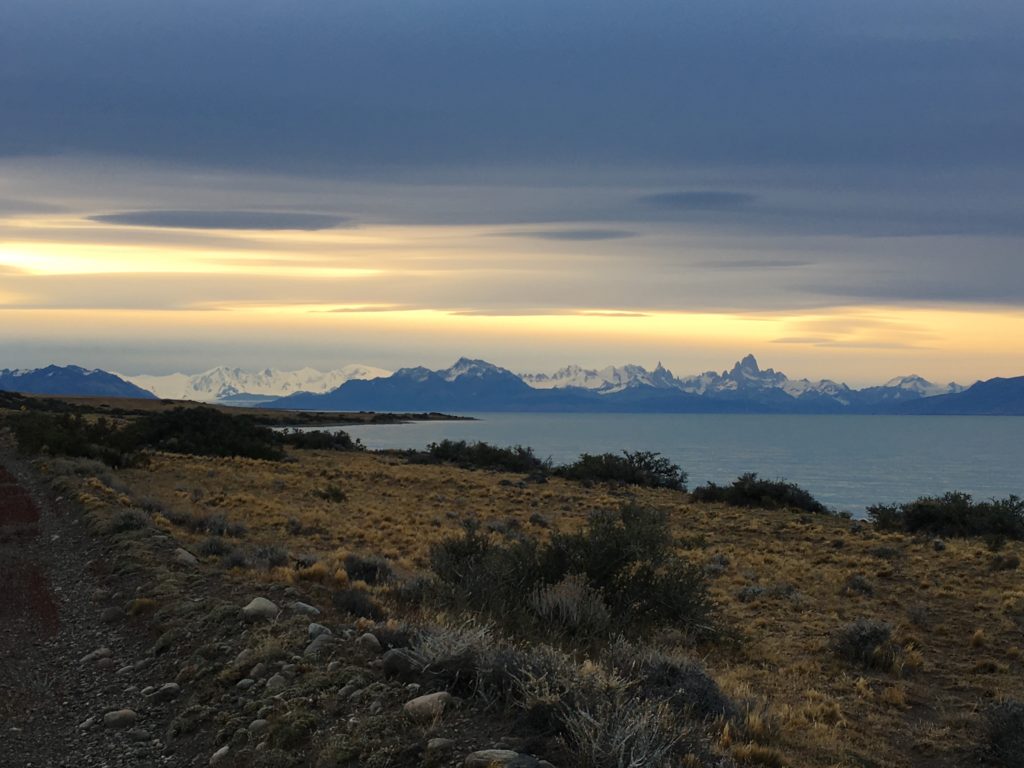
Looking south across Lake Viedma at toward Mt. Fitz Roy and the southern Patagonia icefields on our final day in the field
![]() This work is licensed under a Creative Commons Attribution-NonCommercial-ShareAlike 4.0 International License.
This work is licensed under a Creative Commons Attribution-NonCommercial-ShareAlike 4.0 International License.


